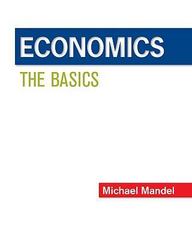Question
i don't know how to answer this question--i don't need answers i just want to know how to approach the questions: Firm Impacts of Environmental
i don't know how to answer this question--i don't need answers i just want to know how to approach the questions:
Firm Impacts of Environmental Regulation with Implications for Technological Change
Businesses often oppose environmental regulation because it raises their operating costs, reducing their profits. Some firms may see their costs rise so much that they no longer make profit and go out of business.
Suppose that Woodstock, CT has ten dairy farms whose manure runoff pollutes the Woodstock River. The table below gives information about the operation of each farm, identified by A-J:
| x | L | z | |
| A | 270 | 24 | 2 |
| B | 580 | 44 | 6 |
| C | 760 | 49 | 12 |
| D | 650 | 60 | 15 |
| E | 270 | 12 | 9 |
| F | 380 | 15 | 18 |
| G | 200 | 6 | 13 |
| H | 260 | 7 | 25 |
| I | 250 | 6 | 35 |
| J | 1020 | 21 | 204 |
where
x = daily milk output in gallons
L = daily demand for labor (in worker hours)
z = average daily quantity of manure leaching into the river (in gallons)
The wholesale price of milk ( ) is $1/gallon, and the wage () is $12/hour. Suppose that farms cannot adapt their individual production practices: they either remain in business if they are profitable, or they have to shut down if they are not.
a) Suppose that farms can pollute as much as they want. Which farms are profitable? Assuming that unprofitable firms shut down, calculate Woodstock's resulting total milk output, total company profits, and total runoff.
b) Suppose the marginal external cost of each gallon of runoff () is $8. What is the net social benefit? On balance, does society benefit from the profitable farms remaining in business?
Hint: because we don't have information on consumers here, we ignore consumer surplus, and only consider revenue, input cost, and external cost in the social benefit calculation.
c) Suppose the Connecticut EPA conducts field measurements of manure runoff and fines each farm at the level of the external cost it produces. Which farms remain in business? What are total milk output, total company profits, and total runoff? What about the net social benefit? (3p)
d) Suppose that instead of a fine, the EPA imposes a uniform performance standard which is expressed as a maximum runoff intensity ( / ). To enforce the standard, farms which pollute above the intensity limit are forced to shut down. At what range of values (max / min) would the standard have to be set to result in a similar net social benefit as the fine? How is the outcome different from the policy in c)?
e) Using a scatterplot chart in Excel, graph the isoquant of milk production technology in Woodstock in runoff-labor space, i.e., compute how much runoff and labor each farm needs to produce one unit of milk, create the scatterplot of farms (omit the ones that are unprofitable from the start), then add a power trend line. Is the shape of the isoquant consistent with your intuition? Why?
Step by Step Solution
There are 3 Steps involved in it
Step: 1

Get Instant Access to Expert-Tailored Solutions
See step-by-step solutions with expert insights and AI powered tools for academic success
Step: 2

Step: 3

Ace Your Homework with AI
Get the answers you need in no time with our AI-driven, step-by-step assistance
Get Started


